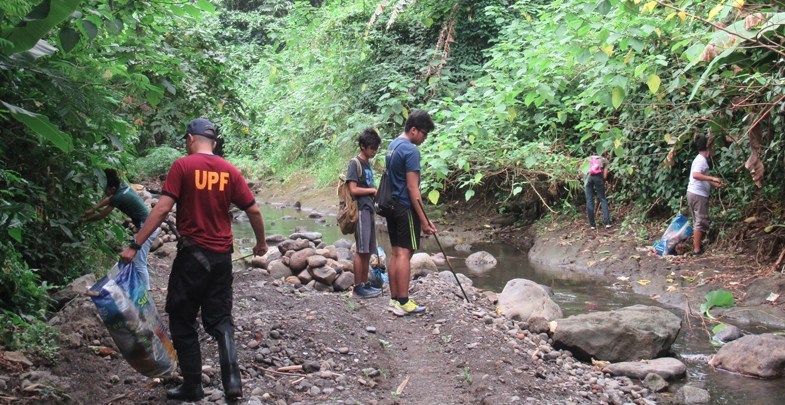
The Office of the Vice Chancellor for Community Affairs (OVCCA), together with the UP Ecology and Systematics Major Students Society (UP ECOSYSTEMSS) conducted last March 10 a clean-up of the Molawin Creek as part of the municipal’s lakeshore and river clean-up in celebration of the World Water Day.
Units of the OVCCA such as the Business Affairs Office (BAO), University Housing Office (UHO), University Hospital Service (UHS), and the University Police Force (UPF) started cleaning the creek early in the morning.
Spearheading the OVCCA team were Dr. Michael S. Sanchez and Engr. Joseph A. Pagtananan, who are also members of the Occupational Health and Safety Standards Committee (OHSSC), while the UP ECOSYSTEMSS was led by John Lorenzo M. Reyes.
Each of the clean-up participant collected the plastic wastes in sacks, which they carried during the activity. They collected 115 kilograms of solid wastes from the typhoon-damaged hanging bridge to Palma Bridge. The wastes consisted of plastic wrappers, plastic bottles, textiles, sacks, diapers, sanitary napkins, styrofoams, and construction materials such as PVCs, cement sacks, and plastic casings of waterproofing compound.
Human activities along the river were also observed. Traps for poaching of wildlife such as those intended for monitor lizards and jungle fowls were destroyed.
The creek was observed to be still teeming with wildlife such as fishes, frogs, toads, water striders, butterflies, bees, and kingfishers. The kingfishers include the White-throated kingfisher (Halcyon smyrnensis), the White-collared kingfisher (Todirhamphus chloris), and the endemic Indigo-banded kingfisher (Alcedo cyanopectus).
Dr. Antonio J. Alcantara, former dean of the School of Environmental Science and Management (SESAM) and now Municipal Environment and Natural Resources Officer (MENRO) said that the “reflection of the creek is a reflection of the University”. Hence, solid waste management should be implemented more strictly in campus. Continuous clean-up of the Molawin creek will also ensure a healthy river that will contribute to the health and food security of the community along the creek and to its final destination–the Laguna de Bay. (Dr. Michael S. Sanchez)



